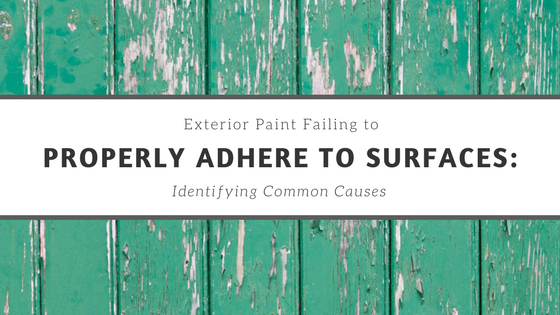
In the hot and humid climate of Florida, troublesome paint problems that result from exterior paint failing to properly adhere to substrates are more common than in other areas of the country.
One way to get attractive, long-lasting finishes is to correctly assess and address the factors that can negatively affect the adhesion between coatings and substrates. Here are some of the things you should consider for the best results.
Types of Surfaces and Coatings
Although the paint and coatings industry has evolved considerably over the past few years, a protective coating system that delivers a one-size-fits-all solution for all the surfaces and conditions is yet to be developed.
Until then, commercial painting contractors must ensure the right coating systems are selected for each application in order to avoid problems like exterior paint failing to adhere to the surface intended.
Paint is the first line of defense against a wide range of ambient conditions, dust, dirt and chemicals. Thus, high-quality elastomeric and corrosion-resistant coatings specifically developed for coastal environments deliver some the best options for the commercial buildings located within close proximity to the Florida’s Gulf Coast.
That’s because only these systems can withstand coast-specific environmental stressors, such as various forms of moisture, abrasive particles carried by strong winds, intense UV radiation and salty air.
Coming down to surfaces, one notable point is that some materials respond better to certain paint systems than others.
As an example, painting bare steel with regular water-based paint can facilitate the rusting process. For adequate protection, specialty coatings should be specified.
As well, applying oil-based paint to cementitious substrates can lead to saponification. But cementitious materials are also porous, which means they can absorb moisture and water easily. To address this problem, commercial paint contractors typically use specialty coating systems, which prevent water intrusion and are breathable enough to allow the moisture trapped inside wall assemblies to escape.
Another example consists of epoxy coatings, which aren’t suitable for use on exterior wood. Because wood expands and contracts with moisture fluctuations, it needs a flexible coating system that can accommodate the repetitive movement caused by expansion and contraction.
Aside from choosing the right paint system for each type of material, the surface must be properly prepared and primed with a compatible primer in order to maximize adhesion.
Air and Surface Temperatures
The hydrological microclimate resulting from high relative humidity levels, frequent rain showers, high ground water and irrigation practices across Florida isn’t the only cause of paint adhesion problems.
Exterior paint failing to adhere to surfaces is also common when air or surface temperature is too hot during paint application. Elevated air temperatures or hot surfaces accelerate paint curing and drying, preventing the development of chemical reactions that promote coating adhesion to the substrate. For optimal air and surface temperatures, product data sheets should be reviewed prior to paint application.
Air Composition
For the commercial buildings located closer to the coast, air corrosivity represents a critical issue. Sea breezes bringing along salt particles combined with air pollution, man-made chemicals and normal weathering processes will eventually take their toll on any paint system, including specialty protective coatings. To avoid extensive damage, be sure to implement a preventative maintenance program that includes regular surface inspection and paint maintenance activities.
To learn more about how to deal with or prevent exterior paint failures, please feel free to talk to one of our representatives today. Our employees have the expertise and experience necessary to offer you commercial coating solutions that can easily stand the test of time.






